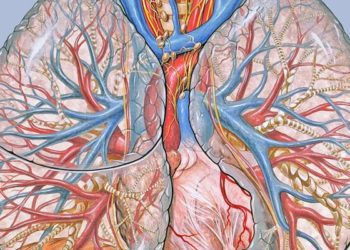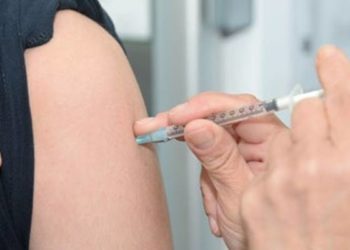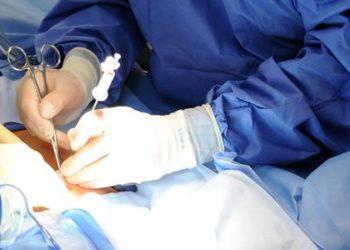Pneumococcal vaccination linked to fewer hospitalizations for pneumonia, sinusitis
1. The introduction of pneumococcal conjugate vaccines PCV7 and PCV13 resulted in a decrease in pneumonia and sinusitis hospitalizations in children under age 5.
2. Pneumonia severity did not change significantly following the introduction of pneumococcal vaccination.
Evidence Rating Level: 2 (Good)
Study Rundown: More than 90 different serotypes of Streptococcus pneumoniae can cause pneumonia and sinusitis in children. The use of a 7- (PCV7) or 13-valent (PCV13) vaccine has been commonplace for young children for more than 10 years, and its effect on serious invasive infections has been well established. This study explored the change in rates of noninvasive infectious such as sinusitis and pneumonia following the introduction of pneumococcal vaccination. Results indicated that the incidence of hospitalization for both sinusitis and pneumonia in children <5 years old fell following introduction of vaccination. There was little effect on either disease in children over 5. In addition, the rates of clinically severe pneumonia before and after vaccination were comparable. This study is limited by the use of a single Swedish country as the population. They also relied on the correct coding of discharge diagnoses which may not represent the rates of disease accurately. However, they did see a very high uptake in vaccination rates, which suggests that vaccination played a role. Overall, this study reaffirms the importance of pneumococcal vaccination and may help physicians to better explain the positive effects of PCV to parents.
Click to read the study, published today in Pediatrics
Relevant Reading: The Worldwide Impact of the Seven-valent Pneumococcal Conjugate Vaccine
In-Depth [retrospective cohort study]: The incidence of hospitalization for pneumonia and sinusitis in Stockholm County, Sweden, from 2003 to 2012 was studied, and rates before and after the introduction of PCV7 were compared. The incidence of hospitalization for sinusitis decreased in children under age 2 from 70 to 24 per 100 000 person years (P <0.001). However, a non-significant decrease was found from 70 to 60 per 100 000 person years for children ages 2 to 5 (P = 0.06). Similarly, the incidence of hospitalizations for pneumonia in children <2 years and children aged 2 to 5 fell significantly during the study period (P <0.001 and P=0.002, respectively). There was no difference in hospitalizations for sinusitis or pneumonia in children older than age 5. In addition, using C-reactive protein, oxygen saturation, and need for oxygen or intensive care as surrogates for pneumonia severity, a comparable incidence of severe pneumonia was found before and after vaccination.
More from this author: Childhood ADHD, stimulant treatment not linked with height, Healthcare-associated infections falling among critically ill children, Postresuscitation care may be needed regardless of PPV duration, School-based health centers may serve as patient-centered medical homes, Out-of-hospital medication error rate unchanged in young children
Image: PD
©2014 2 Minute Medicine, Inc. All rights reserved. No works may be reproduced without expressed written consent from 2 Minute Medicine, Inc. No article should be construed as medical advice and is not intended as such by the authors, editors, staff or by 2 Minute Medicine, Inc.









